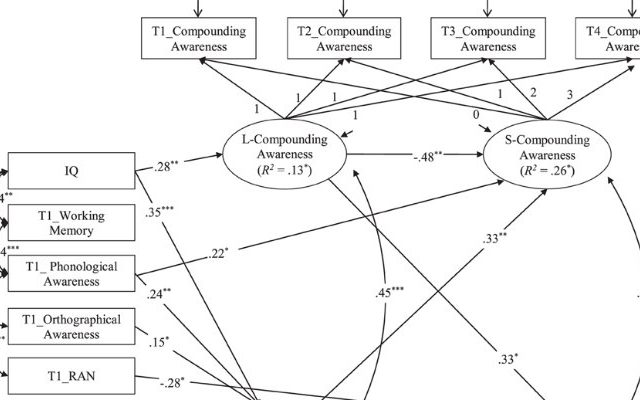Though written from the perspective of a Marketing Researcher, I think (and hope!) this post will be relevant to researchers and Data Scientists working in many fields. Multilevel, Longitudinal and Growth models are related methods that originated largely independently in Statistics, Econometrics, Psychometrics and other fields. They are used in Marketing Research as well, though perhaps less often than they should be. Choice Modeling is one example. They are complex and sometimes confusing subjects, as authors from different disciplines may use the same terms to mean different things and different terms to mean the same things.
Hierarchical and Panel Models are two other designations often used…and there are also Mixed models. Some variations overlap with Time-Series Analysis, another large family of modeling techniques that is frequently a part of Marketing Mix Modeling.
I should mention that I’ve seen “multilevel” used in the Data Science community to mean multinomial logistic regression, presumably because the dependent variable in that case has three or more categories. This is highly idiosyncratic usage.
Definitional matters aside, what are they used for? One application is when smaller units are “nested” within larger units. Two examples are students nested within schools and employees nested within companies. Students in the same school or employees in the same companies will be more similar to each other than to students in other schools or employees in other companies. Unless we take these within-group correlations into account our standard errors will (usually) be too small and the coefficients we estimate – say, in a regression analysis – may be inaccurate.
They also come into play when we need to follow people, brands or companies longitudinally rather than cross-sectionally (one slice in time). We do this because we want to understand or predict patterns that occur over time. Some of these patterns may actually be chance fluctuations, however – humans often see order in randomness and we should confirm to the extent possible that the patterns we’ve observed are real. This is another way in which these methods are employed. Also, what we may suspect are the causes of these patterns may themselves fall into patterns – that is, the patterns and their causes can both be segmented. Growth Mixture Modeling is one such method popular in Educational Psychology and some other fields.
Consumption habits of customers in a retail database is one example from Marketing Research. Some customers buy pretty much the same brands over and over again, while others are highly responsive to certain kinds of promotions (but not others). Another example is when some consumers decrease their spend over time while others increase it. The first group may include customers who are defecting from your store to competitors, and the second group, customers defecting from other stores to yours. There would other possible interpretations as well, of course.
Some of these methods also come in very handy in consumer tracking studies, which typically collect vast amounts of useful data that are unanalyzed beyond simple cross tabulations or perhaps a correspondence analysis map or two.
I should stress that there are many ways these methods can be put to work besides the simple examples I’ve given. I used to dismiss them as mainly of interest to academics under pressure to churn out publications, but I now admit I was wrong, particularly as my interest in causal analysis has grown and I’ve broadened my reading habits and analytical skills.
With Big Data (under various definitions) becoming more readily available, these methods, along with Time-Series Analysis, are increasingly essential. But they ain’t easy for most of us…Below are some books I have found helpful in getting my head around these subjects. Though some are regarded as “classics” the books are not listed in any order or personal preference or priority.
- Experimental and Quasi-Experimental Designs (Shadish et al.)
- Introduction to Bayesian Econometrics (Greenberg)
- Introductory Econometrics (Wooldridge)
- Econometric Analysis (Greene)
- Nonparametric Econometrics (Li and Racine)
- Applied Nonparametric Econometrics (Henderson and Parmeter)
- Data Analysis Using Regression and Multilevel/Hierarchical Models (Gelman)
- Multilevel and Longitudinal Modeling (Rabe-Hesketh and Skrondal)
- An Introduction to Multilevel Modeling Techniques (Heck and Thomas)
- Longitudinal Analysis (Hoffman)
- Econometric Analysis of Cross Section and Panel Data (Wooldridge)
- Panel Data Econometrics (Arellano)
- Econometric Analysis of Panel Data (Baltagi)
- Analysis of Panel Data (Hsiao)
- Longitudinal and Panel Data (Frees)
- Generalized Method of Moments (Hall)
- Generalized Estimating Equations (Hardin and Hilbe)
- Applied Bayesian Hierarchical Methods (Congdon)
- Handbook of Spatial Statistics (Gelfand et al.)
- A Primer for Spatial Econometrics (Arbia)
- Statistics for Spatio-Temporal Data (Cressie and Wikle)
- Longitudinal Structural Equation Modeling (Newsom)
- Longitudinal Structural Equation Modeling (Little)
- Growth Modeling (Grimm et al.)
- Higher-order Growth Curves and Mixture Modeling (Wickrama et al.)
Hope this helps!
Kevin Gray is President of Cannon Gray, a marketing science and analytics consultancy.
Read more by Kevin Gray, here
Article by channel:
Everything you need to know about Digital Transformation
The best articles, news and events direct to your inbox
Read more articles tagged: Featured, Marketing Analytics, Statistics






